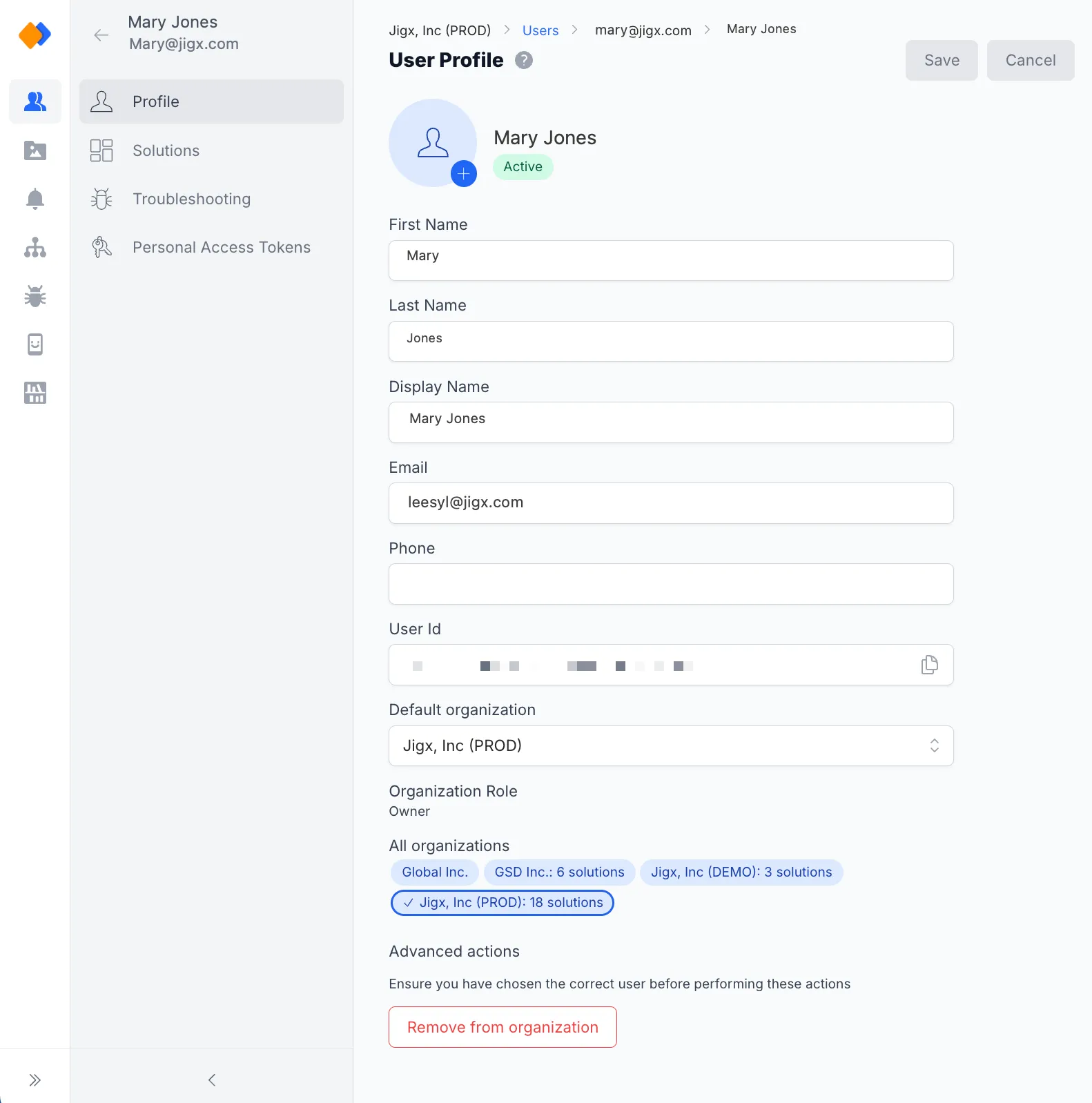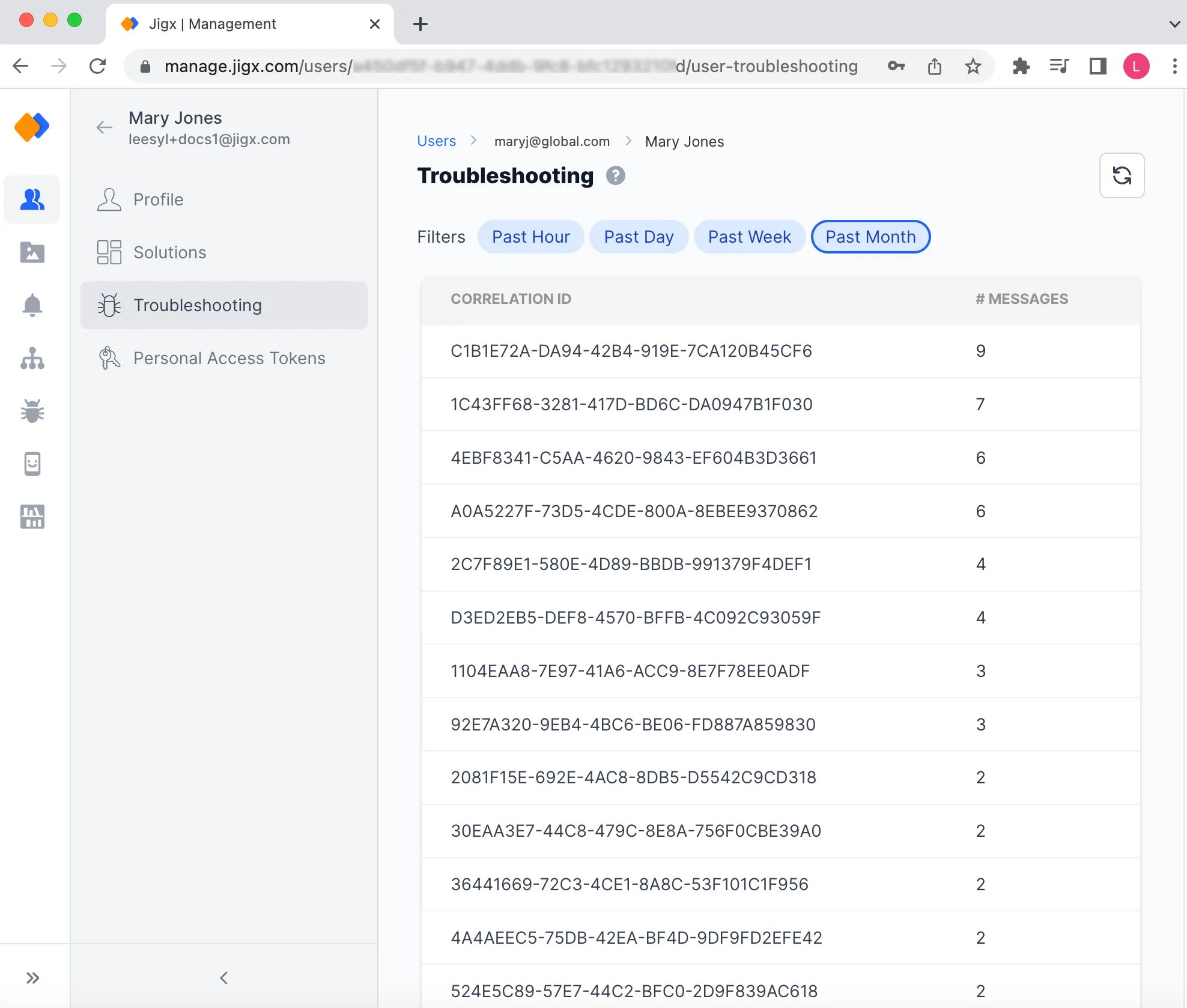Users
In the Users area, you can manage all users in your organization. All users who can log in to your organization's mobile app are listed here. You can only assign Solutions to users, who are in this list.
In the Users list, you can view each user's current organizational role, assigned solutions, and their invite status (Active vs. Invited). Click on a user's name to see the user's details, manage the user's solutions and change their role for each assigned solution. You can also filter the user list by organizational role, invite status, and solution assignment.
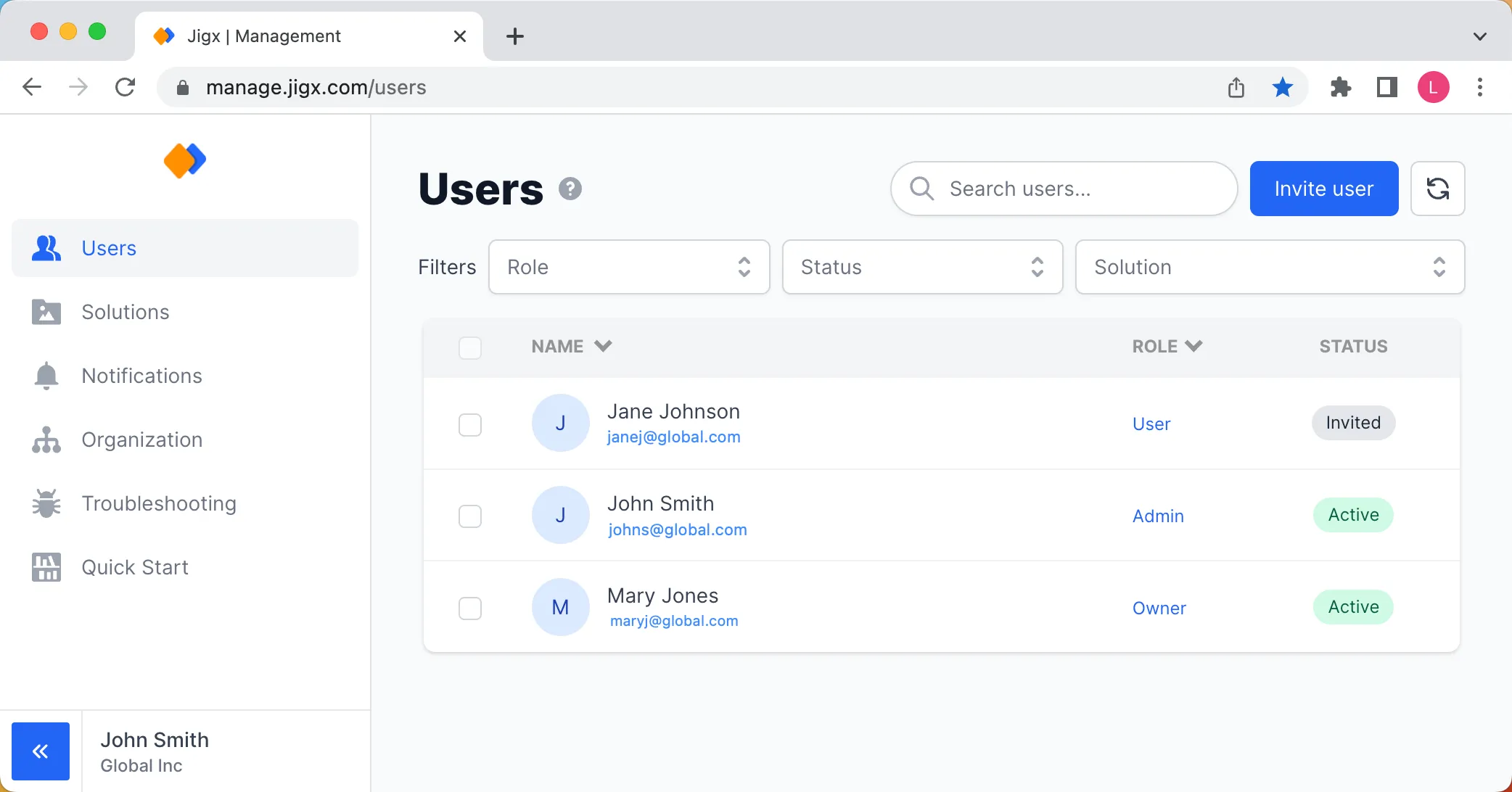
Before you can invite users to your organization via email, check the Invites setting in Organization Settings. The language-specific invite templates have to be set up before you can start inviting users. At least one language and the corresponding invite template setup is required.
To add users to your organization, you need to invite them. Click on Invite User at the top right of the screen to open the side panel. Fill in the user's details, select a default language to be used for the invite email, and click Invite. Next assign Solutions to the invited user by clicking on the user's name in the list and then navigating to Solutions. Click on Add solutions at the top right of the screen to open the side panel. Select the solutions you want to assign to the user and click Add solution.
The user will receive an invite email with instructions on how to onboard. Once the user onboards successfully, the invite status will change to Active in the user overview.
To bulk invite users, contact Jigx support at support@jigx.com.
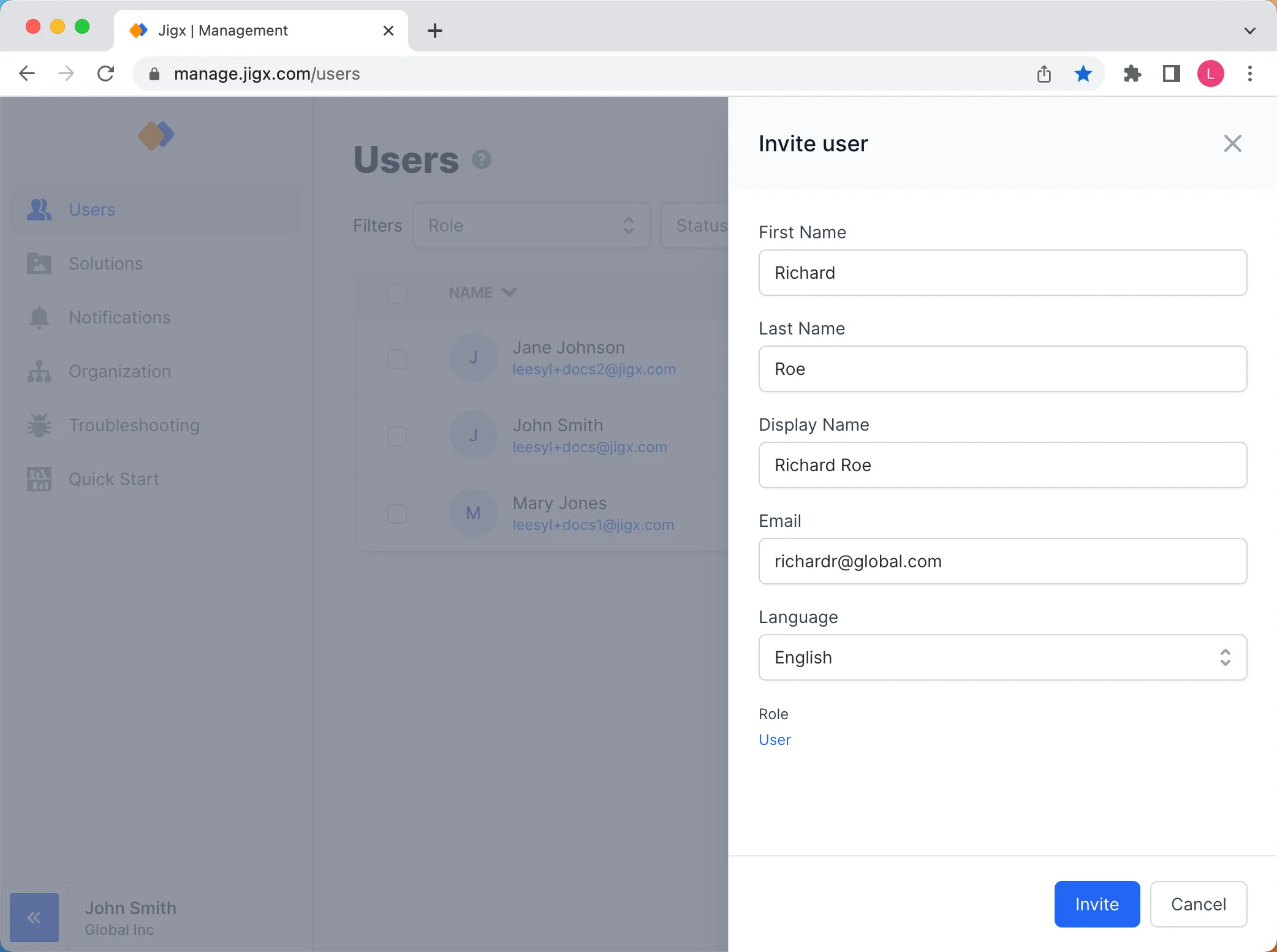
If you want to re-invite the user because they did not accept your invitation or an error occurred, click on the user's name and click the Resend invite link at the top of the page. Next, select a language for the invite, a message displays stating that the invite has been sent.
If users don't receive the invite emails, ask them to check their junk or spam email folder.
Click on the user's name in the list and navigate to the Solutions menu option by clicking on the solution icon in the left navigation pane, Click on Add solutions at the top right of the screen to open the side panel. Select the solutions you want to assign to the user and click Add solution.
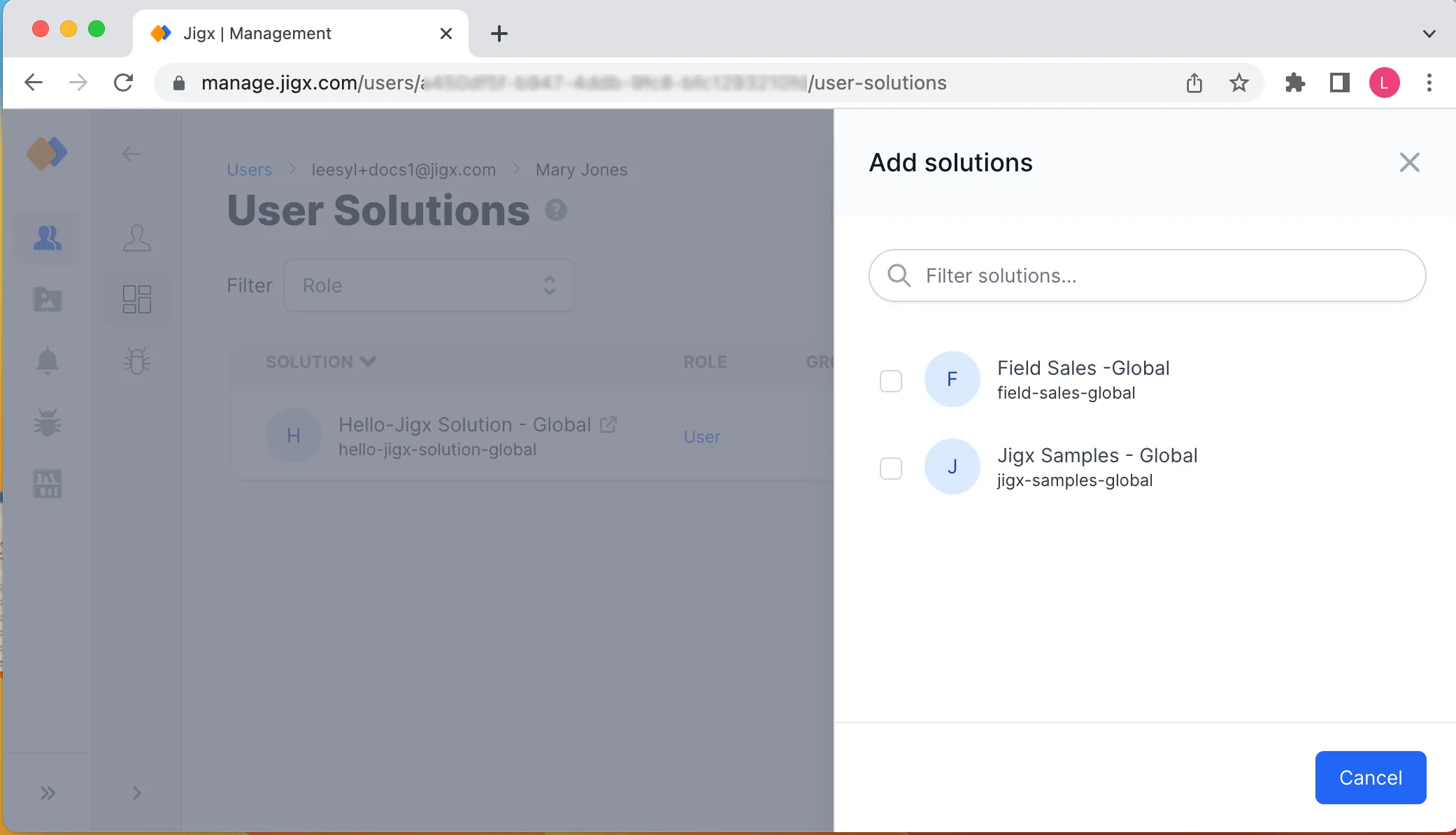
Each user in the user list has an organization role assigned. When you invite users, their default organization role is set to User. You can change the user's organization role by clicking on the Organization role in the user's profile. All changes made to the organization's roles take effect immediately. Refer to Permissions - User Roles to get a detailed overview on the roles used in an organization and solutions-level.
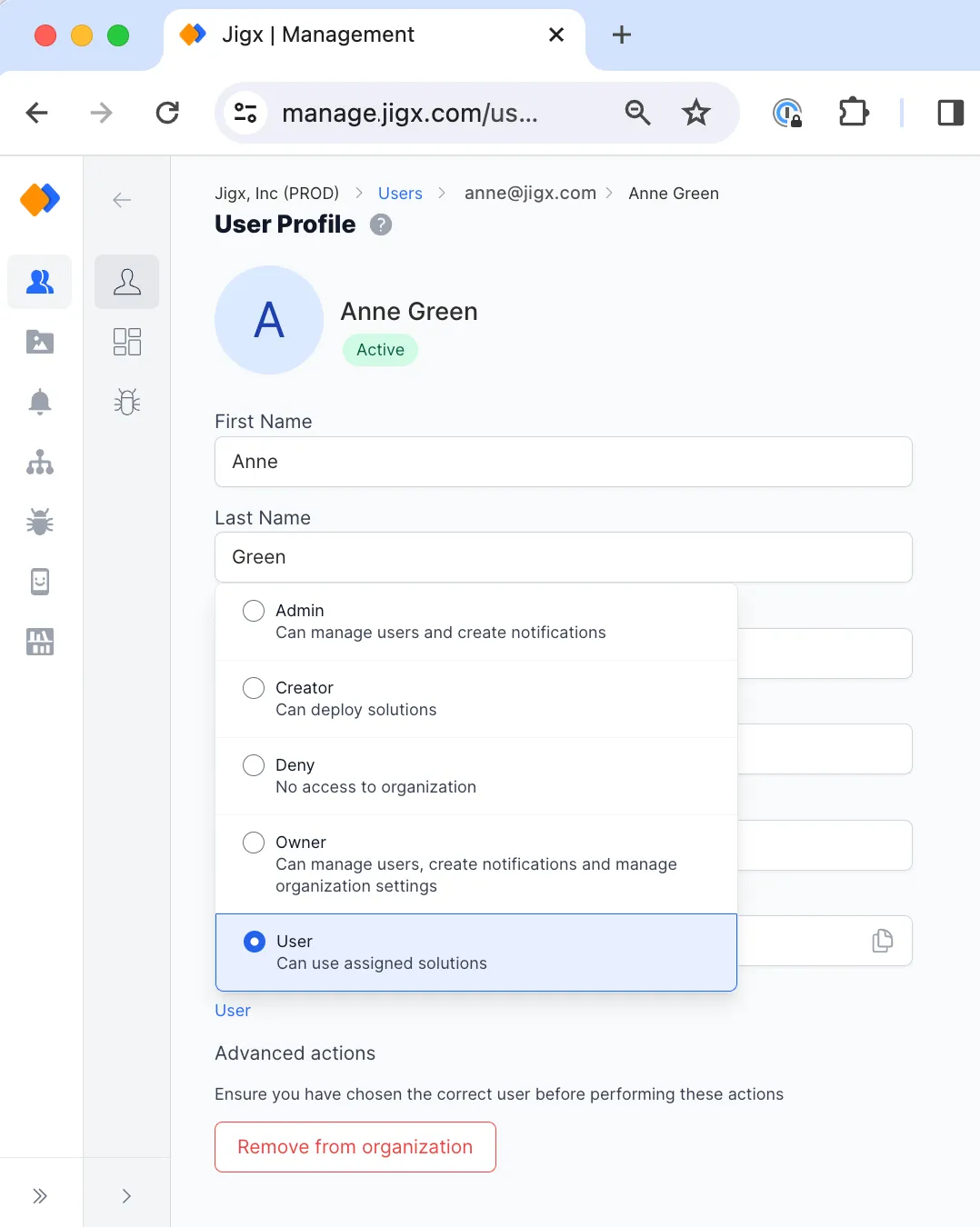
Each user in the user list is assigned a solution role. When you invite users, or add solutions to users their default solution role is set to User. You can change the user's solution role by clicking on the role in the Role column. All changes made to the solution role takes effect immediately. Refer to Permissions - User Roles to get a detailed overview on the roles used in an organization and solutions-level.
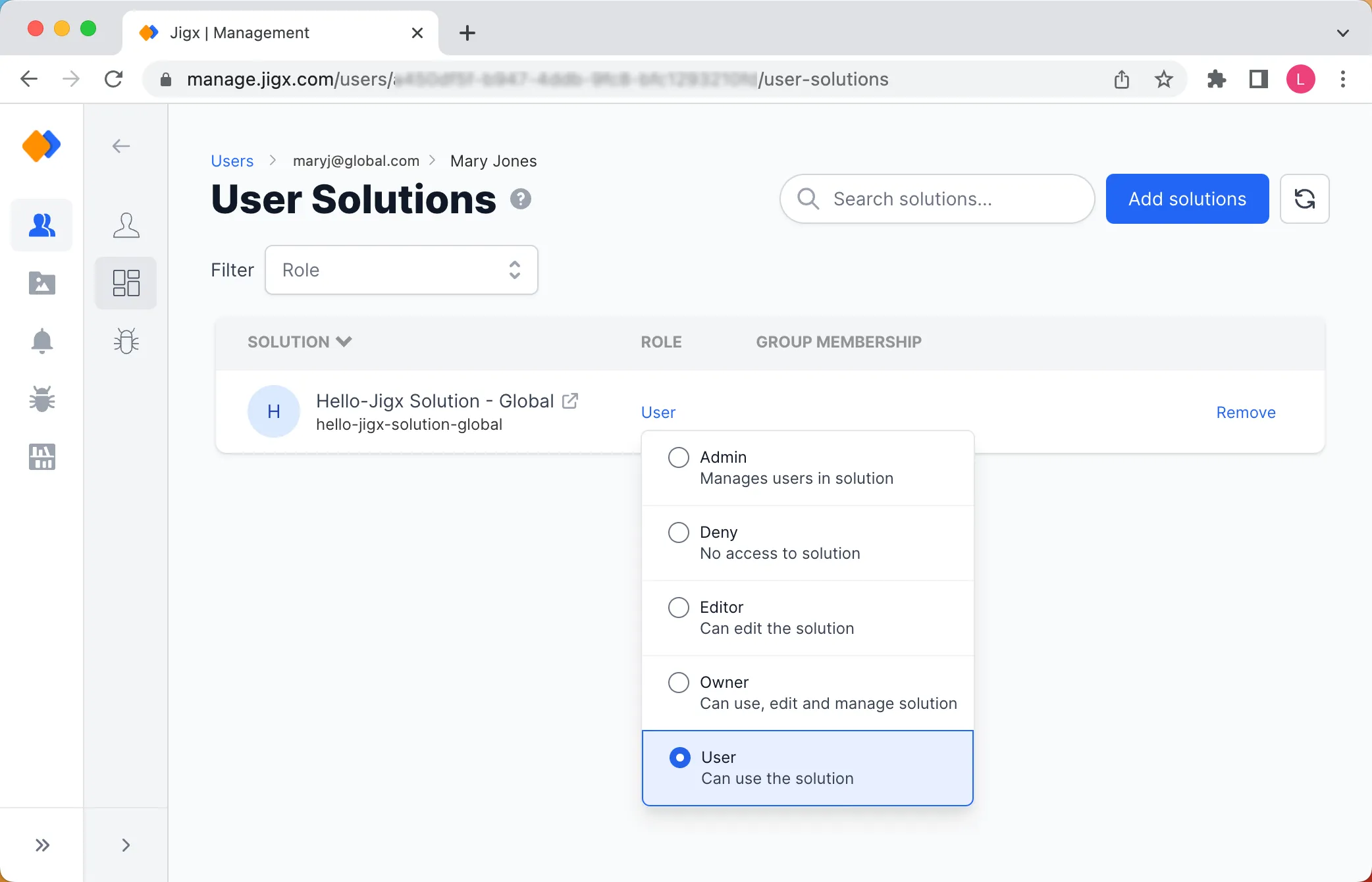
Click on the user's name in the list and click the Remove from organization button at the bottom left of the screen. You need Admin or Owner permissions to be able to remove a user from an organization.
